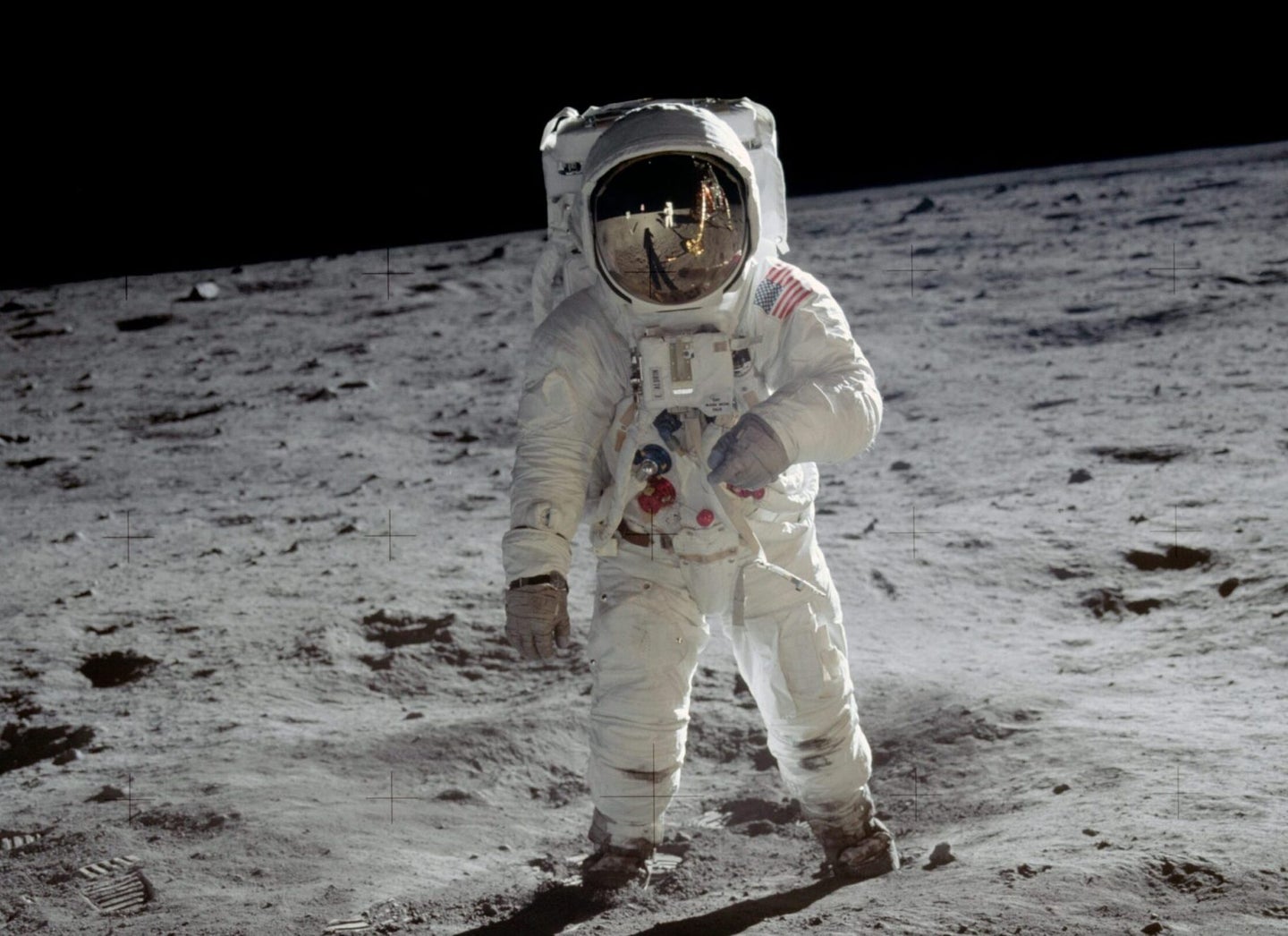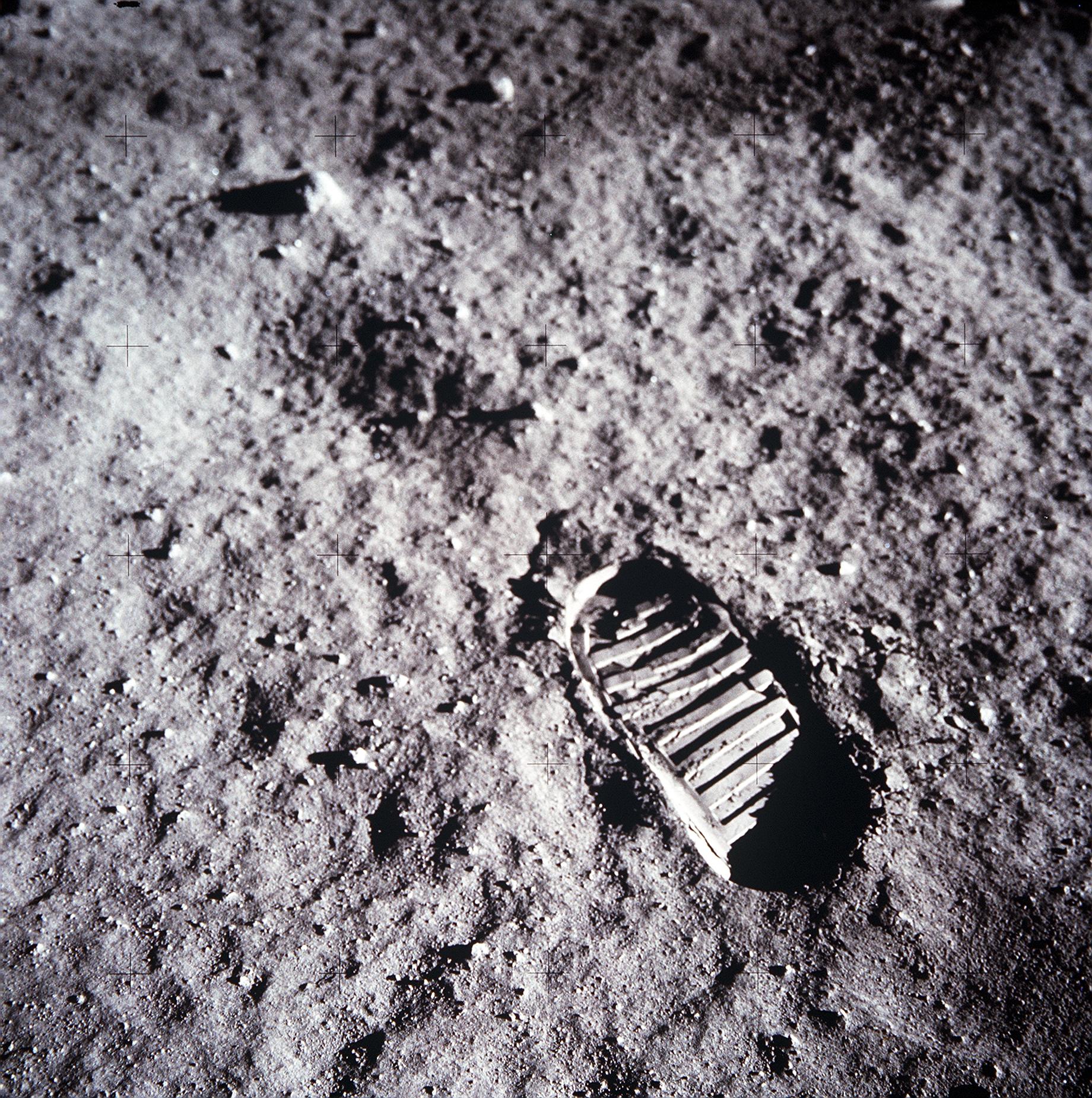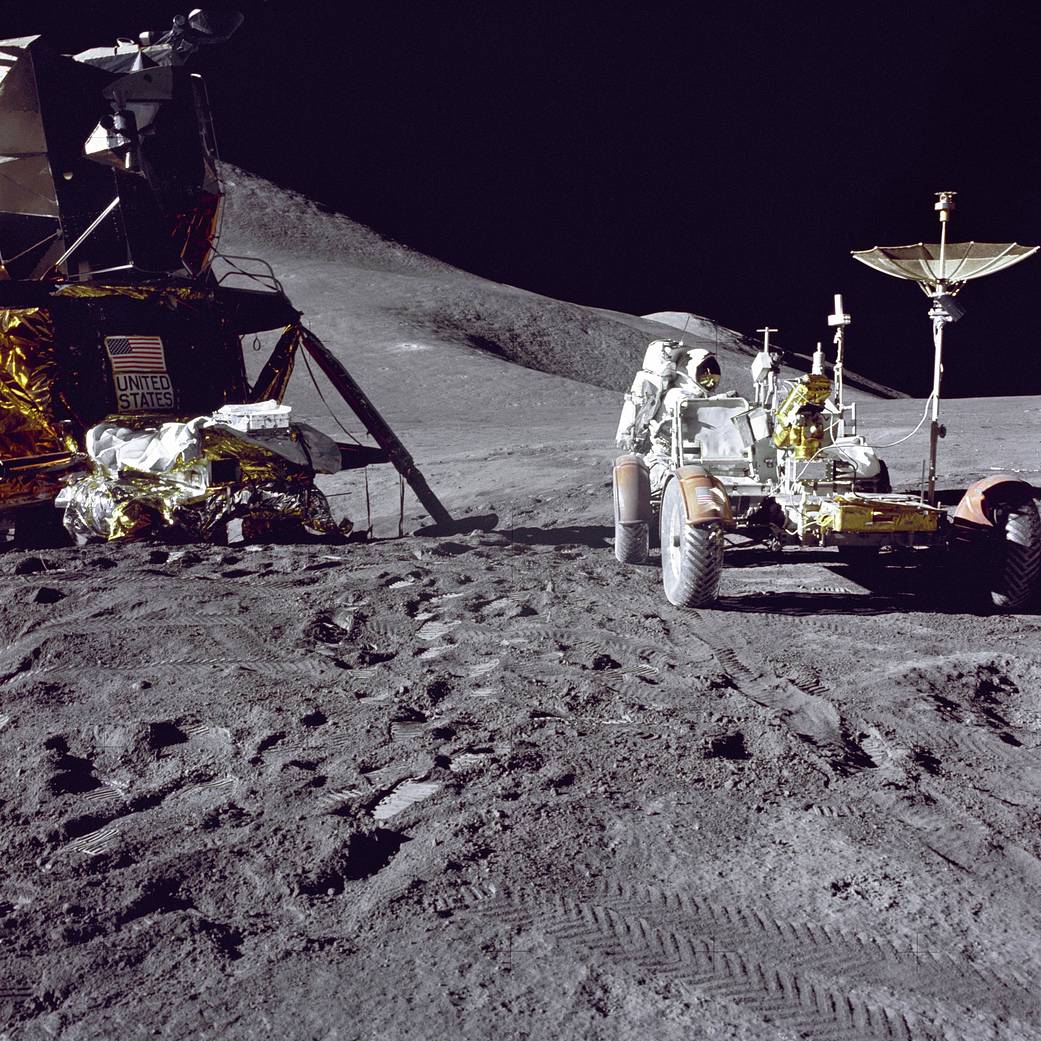
On Earth, we’ve decided that some places are worth saving. Whether it’s the pyramids of Giza or the battlefield lands at Gettsyburg, sites that epitomize our cultural heritage are safeguarded by legal frameworks.
But human history extends beyond our planet. In 1969, astronaut Neil Armstrong became the first human to walk on the moon and left behind that first footprint. Some view it as comparable to any archeological site on Earth—without the same protections. Undisturbed, the footprint could last for a million years. But a revived interest in the moon means the lunar surface is about to be busier than ever. No law specifically defends the footprint or sites like it from being run over by a lunar rover or astronauts on a joyride.
“Just in this year alone, we have four or five missions planned,” says Michelle Hanlon, a space lawyer and co-founder of the nonprofit For All Moonkind. “Not just from nations, but from private companies.” While some upcoming lunar expeditions will be flybys, others will actually land on the moon.
In some ways, it’s a race against the clock—and Hanlon is making moves. On March 27, while attending a meeting of the legal subcommittee of the United Nations Committee on the Peaceful Uses of Outer Space (COPUOS), she announced the creation of the For All Moonkind Institute on Space Law and Ethics. This new nonprofit organization will go beyond advocating for protecting off-world heritage sites and contemplate the ethics around some activities in space that are not fully covered in existing international law.

There is some precedent to lunar law. The Outer Space Treaty of 1967 governs activities in outer space and sets important boundaries: Anything but peaceful use of the moon is prohibited, and nations are not allowed to claim territory on the satellite or any celestial body.
The Outer Space treaty is also quite vague, according to Christopher Johnson, a space lawyer with the Secure World Foundation, a nonprofit dedicated to space sustainability. You can use resources in space but not appropriate them. In addition, you must give other nations and companies “due regard” and avoid “harmful contamination” of the extraterrestrial environment.
However, these general principles have never been applied to solving practical problems. “We are realizing that we just have a couple of broad dictums,” Johnson says. “You know, be nice to your neighbor, observe the golden rule, show people a little bit of respect.”
[Related: Say hello to the Commerce Department’s new space traffic-cop program]
Because these rules have not really been tested, Johnson says we can’t be sure people will follow them. The experiment is about to begin: India and Russia plan to launch their unscrewed Chandrayaan 3 and Luna 25 missions to the lunar surface this summer, for instance, while Japanese company iSpace hopes to place a lander on the lunar surface in late April. SpaceX aims to ferry a billionaire customer around the moon in a Starship vehicle by year’s end.
It was with an eye on increasing human activity on and around the moon that Hanlon co-founded For All Moonkind in 2017, an all-volunteer organization dedicated to lobbying for legal protections for areas of cultural heritage on the moon and elsewhere in space. That includes the Apollo program landing sites and the lunar landers left behind by the Soviet Union. These protections could eventually extend to natural wonders like Olympus Mons, the largest volcano on Mars and in the solar system.
Together with For All Moonkind, the Secure World Foundation produced a Lunar Policy Handbook, which they distributed at the United Nations in Vienna during the For All Moonkind Institute announcement at the end of March. Both For All Moonkind and the Secure World Foundation are official observer organizations at COPUOS and are allowed to sit in on meetings.

The new institute and the handbook represent a modern interest among policymakers, space lawyers, and private companies to create clearer rules of the road for how humans will actually behave on the moon when there are multiple parties present around the same time. These are issues Johnson says policymakers need to be wary of and that they should think through the precedents that could be set by actions that are not necessarily against international law but might not be a good idea.
“This is why we created the Institute on Space Law and Ethics because there are people who want to know what it means to be responsible,” Hanlon says. “The problem is we don’t have a blueprint for that.”
Johnson points to the 2019 crash landing of the Israeli Beresheet lunar lander as an example, where unknown to the other parties of the mission, the nonprofit Arch Mission Foundation had included freeze-dried tardigrades, also known as water bears, in the payload. Tardigrades are hardy and known to be able to survive in the vacuum of space, so their spilling onto the lunar surface could present a form of biological contamination, although some follow-up research suggests the microscopic creatures did not survive the violent impact.
“Smuggling tardigrades to the moon doesn’t seem to clearly violate any international law that I can point to,” Johnson says. “The ethical component steps in to fill a gap about the law to say, ‘Well, is it a good idea?’”
[Related: Want to learn about something in space? Crash into it.]
Protecting cultural heritage sites like the Apollo landing sites, on the other hand, could actually be interpreted as violating the probation on claiming territory in space, according to Hanlon. That’s why For All Mankind is involved in discussions around the ethics of lunar activity generally, she says. The hope is that—if the world’s nations can agree that there’s significant, shared cultural heritage on the moon—the aftereffect could be better relations between major players in the current space race.
“The ultimate goal is a new treaty, not an amendment to the Outer Space Treaty, that recognizes cultural heritage beyond Earth,” Hanlon explains. “It’s going to be a long time, especially now with the Russian invasion of Ukraine, for us to all agree on something here at the UN. But we think it can start with that heritage, that kinship that way.”
Or as US President Lyndon Johnson put it when signing the Outer Space Treaty, we “will meet someday on the surface of the moon as brothers and not as warriors.”
The post Lunar laws could protect the moon from humanity appeared first on Popular Science.
Articles may contain affiliate links which enable us to share in the revenue of any purchases made.
from Popular Science https://ift.tt/BavgSP6



0 Comments